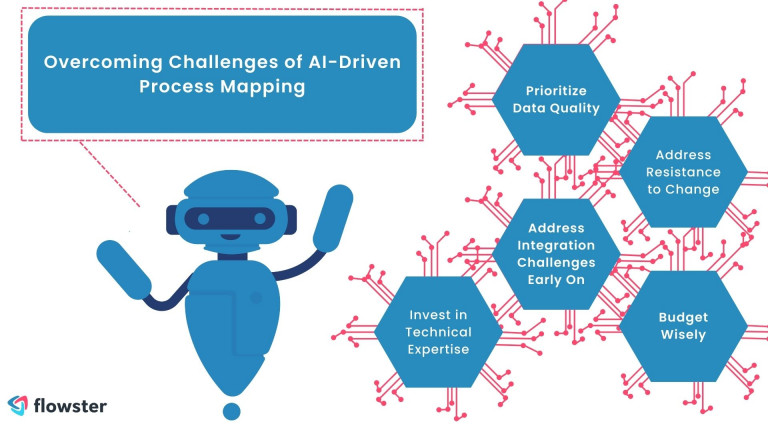How AI Amplifies Marketing Team Capabilities While Preserving Human Jobs
The Strategic Shift: From Replacement to Enhancement
Discover how forward-thinking companies are leveraging artificial intelligence not to reduce their workforce, but to multiply their marketing teams' capabilities and strategic impact. Learn proven methodologies for transforming your marketing operations while preserving and enhancing human value.
The Strategic Shift: From Replacement to Enhancement

The most successful marketing organizations today understand a fundamental truth: artificial intelligence isn't about replacing human talent—it's about amplifying it. This strategic shift from workforce reduction to capability enhancement represents a paradigm change that's reshaping how marketing teams operate and deliver value.
Understanding the fundamental difference between AI automation and workforce reduction is crucial for marketing leaders. While automation focuses on eliminating human involvement, AI enhancement focuses on multiplying human capabilities. Smart companies recognize that the competitive advantage lies not in having fewer people, but in having the same number of people achieve exponentially more impact.
The Competitive Advantage Framework
This visualization demonstrates how AI marketing assistants enhance every aspect of team performance rather than replacing core functions. The data shows that AI-augmented teams consistently outperform traditional approaches across all key performance indicators.
Real-world examples consistently demonstrate this principle. Companies implementing AI enhancement strategies report 2-3x increases in marketing output while maintaining or even expanding their workforce. These organizations understand that the goal isn't to do the same work with fewer people, but to accomplish previously impossible objectives with the same talented team.
Core Areas Where AI Multiplies Marketing Productivity

Data Analysis and Insight Generation
The transformation from manual data processing to instant, actionable insights represents one of the most significant productivity multipliers in modern marketing. What once required hours of spreadsheet manipulation and analysis can now be accomplished in minutes, freeing marketing professionals to focus on strategic interpretation and implementation.
AI-powered customer behavior analysis enables small teams to achieve enterprise-level market research outcomes. Recent industry analysis demonstrates that AI systems can process massive amounts of data quickly, offering insights and trends that inform business decisions without requiring large analytics teams.
AI-Enhanced Data Processing Workflow
flowchart TD
A[Raw Marketing Data] --> B[AI Processing Engine]
B --> C[Pattern Recognition]
B --> D[Trend Analysis]
B --> E[Customer Segmentation]
C --> F[Strategic Insights]
D --> F
E --> F
F --> G[Human Strategy Development]
G --> H[Campaign Implementation]
H --> I[Performance Monitoring]
I --> A
style B fill:#FF8000
style F fill:#42A5F5
style G fill:#66BB6A
Leveraging advanced visualization tools like PageOn.ai's Deep Search capabilities allows teams to integrate complex data visualizations seamlessly into their strategic planning processes, transforming raw information into compelling, actionable intelligence that drives decision-making.
Content Creation and Personalization at Scale
The revolution in content creation demonstrates how AI preserves creative strategy roles while automating repetitive tasks. Marketing professionals become creative directors and strategic orchestrators, while AI handles the execution of personalized content variations across hundreds of customer segments.
Platforms like HubSpot have incorporated AI functions that enable bulk marketing emails personally addressed to relevant customers, allowing one marketer to effectively serve audiences that previously required entire teams. This represents the essence of capability multiplication—the same human expertise now reaches exponentially more customers with personalized, relevant messaging.
PageOn.ai Integration Spotlight
Using PageOn.ai's Vibe Creation feature, marketing teams can transform abstract campaign concepts into compelling visual campaigns that resonate across diverse audience segments. This capability enables a single creative strategist to generate dozens of campaign variations, each optimized for specific customer personas and market segments.
Campaign Management and Optimization
Real-time campaign adjustments that previously required dedicated analysts are now seamlessly integrated into everyday marketing operations. Automated A/B testing and performance monitoring free up strategic thinkers to focus on high-level optimization and innovation rather than tactical execution.
Visual campaign planning becomes exponentially more sophisticated when teams utilize intelligent agents industry ecosystem approaches. PageOn.ai's AI Blocks enable the creation of complex marketing funnels that can be easily visualized, modified, and optimized by team members regardless of their technical background.
Redefining Marketing Roles in the AI Era

The evolution from task executors to strategic orchestrators represents the most significant transformation in marketing roles since the digital revolution. As AI handles routine operations, marketing professionals discover new dimensions of value creation and strategic impact.
New skill sets emerge naturally when AI manages operational tasks. Marketing professionals develop expertise in AI tool orchestration, strategic prompt engineering, and human-AI collaboration optimization. These capabilities make them more valuable, not obsolete, as they become the architects of increasingly sophisticated marketing ecosystems.
Evolution of Marketing Role Responsibilities
The rise of AI-human collaboration models in successful marketing teams creates new career trajectories that didn't exist just years ago. AI assistants for small business applications demonstrate how professionals can leverage intelligent automation while maintaining creative control and strategic oversight.
Marketing professionals in AI-enhanced environments report higher job satisfaction as they move away from repetitive tasks toward more engaging, strategic work. This transformation addresses the common fear that AI creates job insecurity by instead creating job enhancement and professional growth opportunities.
Practical Implementation Strategies

Identifying High-Impact Automation Opportunities
Successful AI implementation begins with strategic mapping of repetitive tasks versus creative decision-making responsibilities. The goal is to identify areas where automation can free up human cognitive resources for higher-value activities without disrupting the creative and strategic elements that define marketing excellence.
Task Classification Framework
- High-Impact Automation: Data processing, report generation, initial content drafts, performance monitoring
- Human-Led with AI Support: Strategy development, creative conceptualization, customer relationship management
- Purely Human: Brand voice development, crisis communication, executive presentations, team leadership
Prioritizing AI implementation for maximum team empowerment requires careful consideration of tools and platforms that enhance existing capabilities rather than replacing them. The focus should be on solutions that make current team members more effective rather than eliminating positions.
Building AI-Enhanced Workflows
The step-by-step process for integrating AI without disrupting team dynamics begins with pilot programs that demonstrate value before full implementation. This approach builds confidence and allows for iterative improvement based on real-world feedback.
AI Integration Workflow
flowchart TD
A[Current Workflow Assessment] --> B[Identify Automation Opportunities]
B --> C[Select AI Tools]
C --> D[Pilot Implementation]
D --> E[Team Training]
E --> F[Performance Monitoring]
F --> G[Workflow Optimization]
G --> H[Full Deployment]
H --> I[Continuous Improvement]
D --> J[Feedback Collection]
J --> K[Adjustment Implementation]
K --> F
style A fill:#FF8000
style D fill:#42A5F5
style H fill:#66BB6A
Creating visual workflow documentation using PageOn.ai's structured visual approach ensures that all team members understand how AI integration enhances their specific roles. This documentation becomes crucial for training existing staff to leverage AI tools effectively while maintaining their professional identity and expertise.
Training existing staff to leverage AI tools effectively focuses on skill enhancement rather than replacement. AI job duties creation tools can help redefine roles to incorporate AI collaboration while preserving human expertise and decision-making authority.
Measuring Success: Productivity Gains Without Job Losses

Key performance indicators for AI-enhanced marketing teams focus on capability expansion rather than cost reduction. The metrics that matter most demonstrate how the same team size achieves exponentially greater impact and strategic value.
Success Metrics Comparison
Demonstrating ROI through capability expansion metrics reveals the true value of AI enhancement strategies. Companies consistently report 2-3x marketing output increases with the same team size, proving that the investment in AI tools pays dividends through enhanced human productivity rather than workforce reduction.
Long-term Career Development Paths
AI-augmented marketing environments create new career trajectories:
- • AI Strategy Specialists: Professionals who design and optimize human-AI collaboration workflows
- • Data Storytelling Experts: Marketing professionals who transform AI-generated insights into compelling narratives
- • Customer Experience Architects: Specialists who use AI tools to design personalized customer journeys at scale
- • Innovation Orchestrators: Leaders who identify and implement emerging AI capabilities for competitive advantage
Success stories consistently demonstrate that companies achieving 2-3x marketing output with the same team size focus on empowerment rather than replacement. These organizations understand that AI agents serve as force multipliers that amplify human creativity and strategic thinking rather than substitute for it.
Future-Proofing Your Marketing Team

Preparing for continued AI evolution while maintaining human-centered approaches requires building adaptable team structures that grow with AI capabilities. The most successful organizations create frameworks that can accommodate new AI tools without disrupting core team dynamics or professional relationships.
Building adaptable team structures involves creating roles that can evolve with technological advancement. Rather than rigid job descriptions, forward-thinking companies develop competency frameworks that allow team members to grow their AI collaboration skills while deepening their human expertise in strategy, creativity, and relationship management.
Future-Ready Team Architecture
graph TB
subgraph "Strategic Layer"
A[Marketing Director]
B[Strategy Lead]
C[Creative Director]
end
subgraph "Execution Layer"
D[AI-Enhanced Analysts]
E[Content Orchestrators]
F[Campaign Managers]
end
subgraph "AI Support Layer"
G[Data Processing AI]
H[Content Generation AI]
I[Performance Monitoring AI]
end
A --> D
B --> E
C --> F
D --> G
E --> H
F --> I
style A fill:#FF8000
style B fill:#FF8000
style C fill:#FF8000
The strategic advantage of early AI adoption for workforce empowerment becomes evident as teams develop sophisticated human-AI collaboration capabilities before their competitors. This early investment in capability building creates sustainable competitive advantages that compound over time.
Creating a culture where AI enhances job satisfaction rather than creating job insecurity requires transparent communication about AI's role as a tool for human empowerment. When team members understand that AI implementation aims to eliminate frustrating, repetitive tasks while expanding opportunities for creative and strategic work, adoption becomes enthusiastic rather than fearful.
Building an AI-Positive Culture
- Transparent Communication: Regular updates on how AI tools enhance rather than replace human roles
- Skill Development Investment: Ongoing training in AI collaboration and strategic thinking
- Success Celebration: Highlighting achievements that result from human-AI collaboration
- Career Path Clarity: Clear progression opportunities in AI-enhanced roles
The future belongs to marketing teams that master the art of human-AI collaboration while preserving the uniquely human elements of creativity, empathy, and strategic insight. By focusing on enhancement rather than replacement, these organizations build stronger, more capable teams that deliver unprecedented value to their customers and stakeholders.
Transform Your Visual Expressions with PageOn.ai
Ready to amplify your marketing team's capabilities without reducing workforce size? PageOn.ai provides the visual intelligence tools your team needs to transform complex strategies into clear, compelling presentations that drive results and demonstrate the true value of AI-enhanced marketing.
Start Creating with PageOn.ai TodayYou Might Also Like
Mastering AI Agent Tool Chains: Visual Guide to Effective Workflow Design
Explore comprehensive visualization techniques for AI agent tool chains. Learn flowcharts, mind maps, and Sankey diagrams to optimize your AI workflows with PageOn.ai's powerful tools.
MCP Implementation Roadmap Visualizer: From Concept to Enterprise Deployment
Discover comprehensive visualization strategies for MCP (Model Context Protocol) implementation roadmaps. Learn how to create effective visual guides for AI system integration across all stages.
Creating Dynamic MCP Component Diagrams: Architecture to Interactive Visualization Guide
Learn how to build interactive MCP component diagrams with this comprehensive guide covering architecture fundamentals, design best practices, and integration with PageOn.ai visualization tools.
MCP Architecture Blueprint: Essential Guide for AI Agent Builders
Discover the comprehensive Model Context Protocol (MCP) architecture blueprint for AI agent development. Learn key components, security frameworks, and implementation strategies for building robust AI systems.
